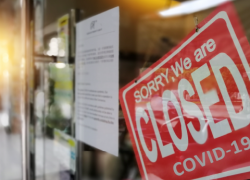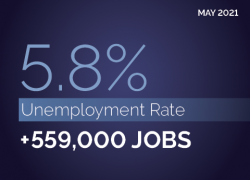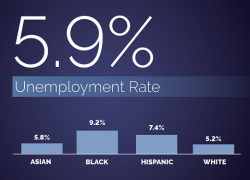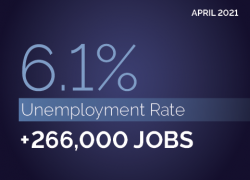
Shortly after being sworn in on Jan. 20, 2021, President Biden issued a groundbreaking executive order to dismantle entrenched disparities in our laws and public policies: E.O. 13985 calls for the federal government to advance racial equity and support underserved communities through immediate and sustained action. It asks each federal agency to assess whether its policies and programs perpetuate systemic barriers to opportunities and benefits and provide concrete recommendations for solutions.
We were both deeply inspired by this action from the Biden-Harris administration. As newly appointed leaders at the U.S. Department of Labor, we are excited to help our department advance equity for all. As the only cabinet agency charged with fostering the welfare of job seekers, workers, and retirees, the Department of Labor has a unique role in ensuring that U.S. labor and employment policies support all workers, especially those who have historically faced discrimination, disadvantage, and exclusion.
Questions of equity and inclusion have an uneven legacy at the Department of Labor. On the one hand, landmark labor programs like unemployment insurance, the federal minimum wage, and federal overtime protections have boosted working conditions and labor standards for generations of workers. As New Deal-era Secretary of Labor Frances Perkins explained when these laws were created, “no job is a good job that does not give [workers] a fair chance for a good life.”
Yet all too frequently, workers from marginalized communities, like women and workers of color—especially Black workers—were written out entirely from these programs’ promises of a good job and a good life. And while our country has made important strides in the legal and economic incorporation of female, Black, and Brown workers, significant gaps remain.
Take the example of unemployment insurance, which has provided an important lifeline to millions of workers and their families, as well as a boost to the economy, throughout the pandemic. Despite its importance, the program was out of reach for many workers, especially Black, Brown and Asian workers, and workers with lower levels of formal education.
Recent research from economist Eliza Forsythe, for instance, suggests that throughout the pandemic, about a quarter of unemployed white workers reported receiving unemployment insurance benefits, compared to just 13% of unemployed Black workers. In a similar vein, just 12% of unemployed workers with a high school degree or less reported receiving benefits, compared to nearly a third of workers with a college degree.
And it’s not just our policies and programs. As Janelle pointed out in a recent blog post, in every economic recession of the last 50 years, Black women have had higher unemployment rates than white men – and the recovery rates of Black men and women have been slower than that of the white labor force. This pandemic is no different, and from February to December 2020, employment for Black women dropped by 9.5%, compared to around 5% for white men and women.
For all these reasons, we are thrilled about the opportunity presented by the equity E.O. Over the past three months, we have been leading a working group of dedicated career and political staff at the Department to implement the E.O.’s charge, using data and evidence to answer three questions:
1. How well do our programs, protections, and procurement and contracting opportunities reach different communities across the country? An example: Which workers have access to apprenticeship programs and which are excluded?
2. What data do we have, or need, to know how the department is serving different communities? An example: What are new indicators we should be collecting to understand the obstacles unemployed workers might face when applying for jobless benefits?
3. What are the barriers different communities face in accessing our programs, protections, and procurement and contracting opportunities? An example: How can we help non-English language speaking workers better understand their rights?
Those are big questions, so we are starting with a close equity analysis of five specific areas, representing a mix of our programs and the populations we support. These areas include unemployment insurance, apprenticeships and job training, procurement and contracting enforcement of our wage and hour laws, and outreach to workers about their rights. After our initial assessment, we will develop concrete plans of where to go next over the coming months and years.
We're also turning to outside experts to help us tackle some of these questions. As part of the equity E.O. effort, DOL’s Chief Evaluation Office recently launched a data equity challenge asking researchers to use DOL data, on its own or combined with other data sources, to help us understand how well our programs and protections reach different populations. We are reviewing proposals now and will soon announce awards of up to $30,000 for scholars to study these questions and present their results to DOL leadership in the fall.
We’re excited to have this opportunity, as well as the support of the department, in implementing this E.O., and will have more to share soon about our work in each of these areas. When we ensure our policies work for historically excluded populations, we improve outcomes for all workers.
Janelle Jones is the chief economist, and Alexander Hertel-Fernandez is the deputy assistant secretary for research and evaluation at the U.S. Department of Labor

 U.S. Department of Labor Blog
U.S. Department of Labor Blog




